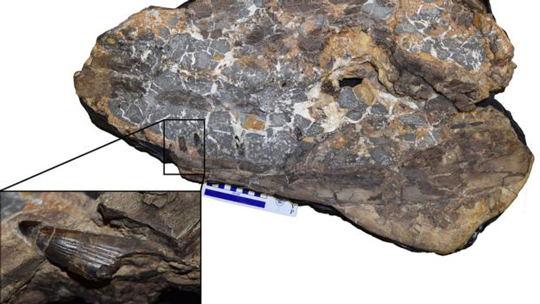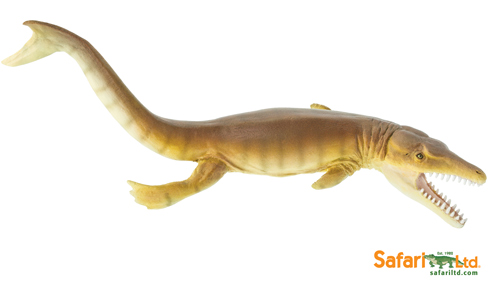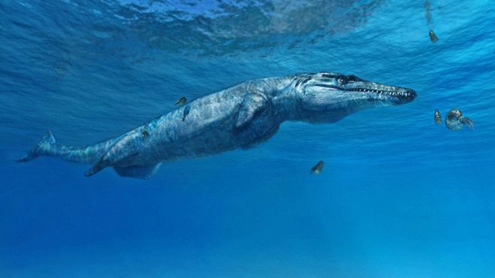Ieldraan melkshamensis – The Monster of Melksham
A new species of prehistoric marine crocodile has been described after an amazing effort by the preparators at the Natural History Museum (London), to separate this crocodile’s partial skull and fragmentary jaw bones from an extremely hard concretion, in which the fossils were entombed. Although in very poor condition, the research team from the University of Edinburgh as well as the Natural History Museum, were able to identify enough unique anatomical traits (autapomorphies), to allow a new species to be erected.
The new marine crocodile (metriorhynchid) has been named Ieldraan melkshamensis, the species name honouring the town of Melksham in Wiltshire where the fossil material was unearthed.
Ieldraan melkshamensis – One Tough Crocodylomorph with a Very Tough Skull
Picture credit: University of Edinburgh/Davide Foffa
Prehistoric Marine Crocodile
The specimen was acquired by the Natural History Museum in 1875, but because of its poor condition it did not attract a lot of scientific attention. The fossil being entombed within an extremely hard concretion (septarian concretion), meant any form of scientific study was extremely limited.
Mark Graham, Senior Fossil Preparator at the Natural History Museum explained the problem:
“The specimen was completely enclosed in a super-hard rock nodule with veins of calcite running through, which had formed around it during the process of fossilisation. The work took many hours over a period of weeks, and great care had to be taken to avoid damaging the skull and teeth as they became exposed.”
Ieldraan melkshamensis – Newest member of the Metriorhynchidae
Measuring more than three metres in length, Ieldraan melkshamensis was one of the most powerful and dangerous marine predators in the warm, shallow seas of western Europe some 163 million years ago (Callovian faunal stage of the late Middle Jurassic). The teeth with their distinctive striations (series of ridges running down the length of the teeth) indicate that this large crocodylomorph, which was very distantly related to today’s crocodilians, fed on large prey items. It might have hunted other marine reptiles as well as preying on squid and fish.
It has been classified as member of the Metriorhynchidae family, specifically assigned to the sub-family Geosaurinae and a phylogenetic analysis places Ieldraan as the sister taxon of Geosaurus, perhaps the best-known of all the metriorhynchids, having been named and described over 100 years ago.
A Model of a Typical Metriorhynchid Crocodylomorph (Plesiosuchus)
The Plesiosuchus model shown above is part of the Wild Safari Prehistoric World model collection, replicas of marine crocodiles are quite rare, to learn more about this model series and to view the range at Everything Dinosaur: Safari Ltd: Wild Safari Prehistoric World”.
A Sister Taxon to Geosaurus
The authors of the scientific paper, published in the “Journal of Systematic Palaeontology” conclude that if this new species is a sister taxon to Geosaurus, this places it in the Geosaurini clade and this data suggests that the major Geosaurini lineages originated millions of years earlier than previously thought.
Lead author Davide Foffa (School of GeoSciences at the University of Edinburgh), stated:
“It’s not the prettiest fossil in the world, but the Melksham Monster tells us a very important story about the evolution of these ancient crocodiles and how they became the apex predators in their ecosystem. Without the amazing preparation work done by our collaborators at the Natural History Museum, it would not have been possible to work out the anatomy of this challenging specimen.”
Prehistoric Marine Crocodile on Patrol – Plesiosuchus manselii
Picture credit: Fabio Manucci/University of Edinburgh
Visit the Everything Dinosaur website: Everything Dinosaur.









Leave A Comment